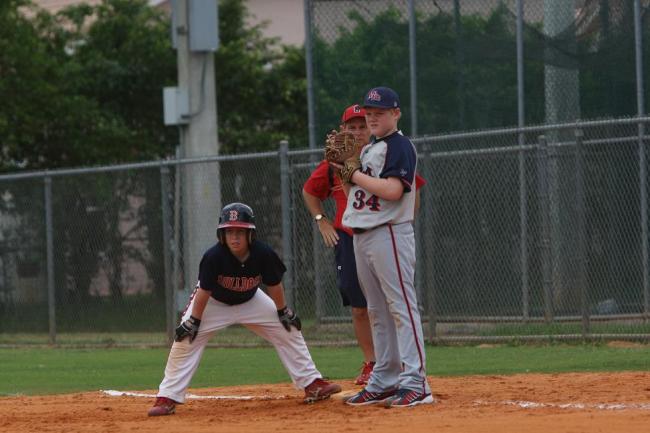
Posted On: 24 January, 2010

Pitch Counts
Pitches are counted and monitored for professional, collegiate, and high school pitchers in order for them to reduce the risk of injury. A 1996 survey conducted by the USA Baseball Medical & Safety Advisory Committee (USA Baseball News, 1996) showed that most experts believed pitch counts should be kept for youth pitchers as well. In response to this charge, the committee sponsored an epidemiological study by the American Sports Medicine Institute (ASMI) to look at this issue. This study - published in The American Journal of Sports Medicine in 2002 - showed a significant relationship between the number of pitches thrown and the risk of shoulder and elbow pain in youth baseball. It is the opinion of ASMI and the USA Baseball Medical & Safety Advisory Committee that joint pain indicates the early development of a potentially serious joint injury. Thus pitch count limits are recommended for youth baseball. If - for some valid reason - a league is unable or unwilling to enact pitch count limits, the league should limit the number of batters faced. Since 9 to 12 year-old baseball pitchers average about 5 pitches per batter, pitch count recommendations can be converted into batter limitations by dividing by 5. However, pitch limitations are a better choice than batter limitations for accurately monitoring and controlling risk of overuse.
Pitch Types
The 2002 study by the ASMI also showed that youth baseball pitchers who throw curveballs or sliders have an increased risk of elbow and shoulder pain. Therefore, youth pitchers should avoid throwing breaking pitches in order to reduce the risk of future overuse injuries.
Pitching Mechanics and Physical Conditioning
A study by ASMI published in 1999 (Journal of Biomechanics) showed that elite pitchers of all levels use similar mechanics, but significantly more force at higher levels. Therefore, pitchers should develop proper mechanics as early as possible and include more year-round physical conditioning as their body develops.
Multiple Appearances
Because a youth pitcher usually stays in the game at another position after pitching, the player is eligible to return to the mound later in the game, according to the rules of baseball. While it may be good strategy to have a starting pitcher come back in and finish a game, it is not a good idea from a health and safety perspective. Muscles, tendons, and ligaments need time to "cool down" after physical activity, just like they need to "warm up" before activity.
Showcases
Showcases are established to give young players the opportunity to display their skills to scouts at higher levels of baseball. Unfortunately, showcases often occur near the end of the players' season, when players are often fatigued and require rest and recovery. In other instances, players participate in a showcase after a prolonged period since their league ended and without adequate preparation to throw hard again. It is without a doubt that young throwers will try to overthrow at these events in an effort to impress the scouts and coaches, which further increases the risk of serious arm injury.
Multiple Leagues
In order to get more opportunity to develop skills, many young players play in multiple leagues. Although the amount of pitching in a league is often limited by league rules or the judgment of its coaches, individual pitchers sometimes exceed such limitations by pitching in more than one league at a time. The strength and skills needed to be a successful pitcher are developed by repetition; however, a pitcher must also give his body time to rest and recover in order to optimize his development.
Year-Round Baseball
In certain parts of warm-weather states (Florida, Texas, California, etc.) baseball leagues are available in all seasons. However, the principle of periodization states that an athlete should have different periods and activities in his annual conditioning schedule. Specifically, baseball pitchers need a period of "active rest" after their season ends and before the next preseason begins. During active rest a pitcher is encouraged to participate in physical activities that do not include a great amount of overhand throwing.
Recommendations
Based upon its expertise and review of existing studies, the USA Baseball Medical & Safety Advisory Committee makes the following recommendations for minimizing a pitcher's risk of future serious arm injury and maximizing his chance of success:
11-12 year old pitchers:
75 pitches per game
100
pitches per week
1000 pitches per season
3000 pitches per year
13-14 year old pitchers:
75 pitches per game
125
pitches per week
1000 pitches per season
3000 pitches per year
Pitch count limits pertain to pitches thrown in games only. These limits do not include throws from other positions, instructional pitching during practice sessions, and throwing drills, which are important for the development of technique and strength. Backyard pitching practice after a pitched game is strongly discouraged.
References:
Andrews JR, Chmielewski T, Escamilla RF, Fleisig GS, Wilk KE. Conditioning program for professional baseball pitchers. American Sports Medicine Institute, Birmingham, AL, 1997.
Andrews JR, Fleisig GS. How many pitches should I allow my child to throw? USA Baseball News April, 1996
Fleisig GS, Barrentine SW, Zheng N, Escamilla RF, Andrews JR. Kinematic and kinetic comparison of baseball pitching among various levels of development. Journal of Biomechanics 32(12):1371-1375, 1999.
Lyman S, Fleisig GS, Andrews JR, Osinski ED. Effect of pitch type, pitch count, and pitching mechanics on risk of elbow and shoulder pain in youth baseball pitchers. The American Journal of Sports Medicine 30(4):463-468, 2002.
Additional publications and research findings available at www.asmi.org

